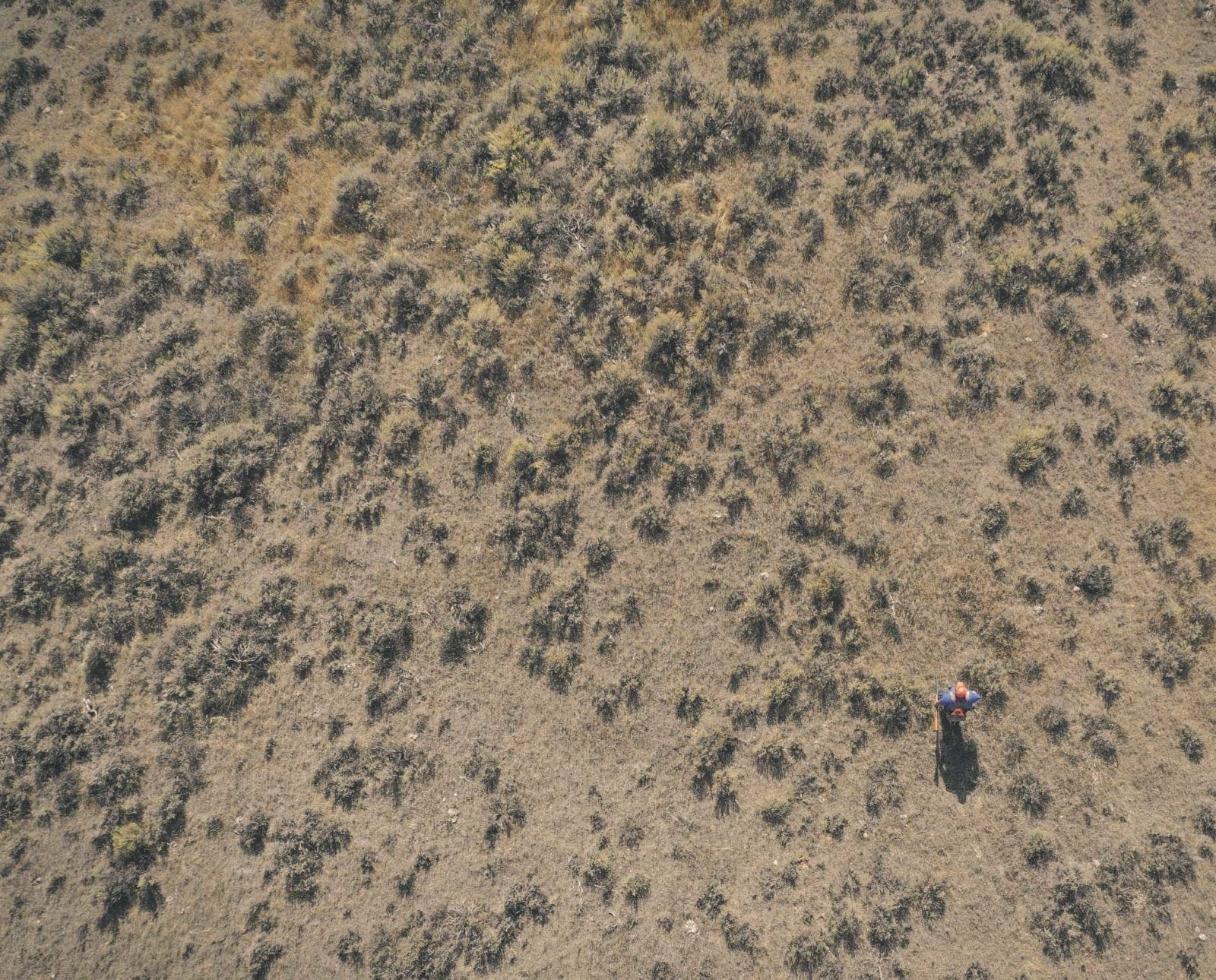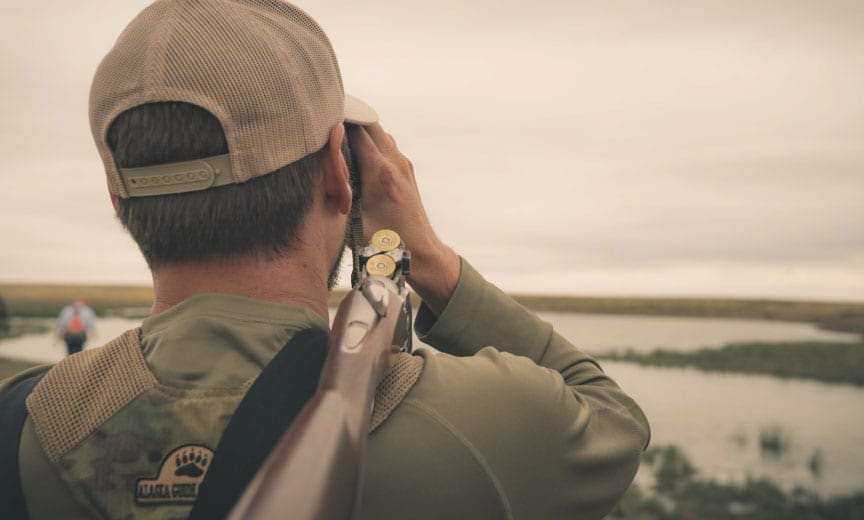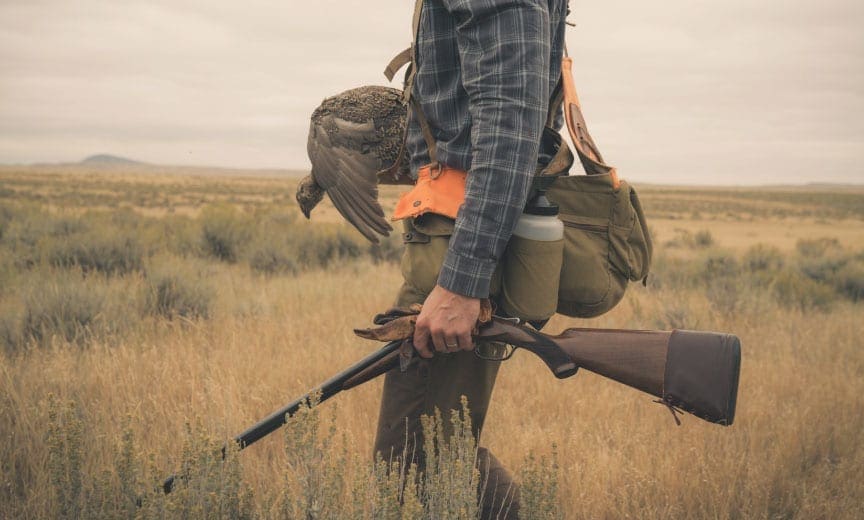Home » Grouse Species » Sage Grouse Hunting » Four Tips for Better Sage Grouse Hunting
Four Tips for Better Sage Grouse Hunting

Brandon Moss's life motto is, "I don't care what I'm…
Consider these tactics on your next sage grouse hunt
There is a saying about upland hunting in Montana which makes a lot of sense: “He that walks the furthest, wins.” I’m not sure what you win: blisters, sore legs, chapped butt. But I do know when hunting sage grouse be prepared to walk. Let’s change the wording of that saying just a little to something like, “He who hunts the smartest, has a better chance of finding birds.” I will admit there was a time when I set out to cover as much land as possible and as fast as I could. Little did I know I was pushing my dogs too fast and passing up birds along the way. I wasn’t really paying attention to where I was walking or much of anything. I was just out to cover sagebrush habitat ground and as much of it as I could.
Observe sage grouse from a distance
Taking some time, just sitting back and observing for a bit teaches you a lot. Early in the morning and later in the evening birds like to move. If I watch the area for a bit, the birds would reveal where they would be going and coming from. It saved me lots of miles of senseless walking. I’ve also observed that in the evening, they head to and from the feeding area to where they will be the next morning, a good starting point.
Be mindful of the weather
Watch the weather. If it’s hot they typically don’t want to move much. The birds will be closer to their feeding areas, allowing them to travel less and thus saving the most amount of energy they possible can.
Sage grouse don’t like to be out in the rain. At those times, look for some heavier sagebrush they could be hiding under. One time I got caught out in a heavy downpour. My mission was to walk a straight line back to the truck as quickly as possible. My dogs loved the cooler weather and covered extra ground. As a result, I had a hard time making it back to the truck due to the numbers of birds the dogs were finding! Pretty much every find was in brush somewhat taller and denser than we had found them in earlier in the day. You may not want to hunt them in the rain, but knowing where they will be when it stops gives you the advantage.
READ: What You Need to Know About Hunting Sage Grouse With a Bird Dog
Where there is one, there are often many
Now you’ve found where to look for sage grouse, what to do when you encounter them? Many times the birds will hold well enough to get of a shot or two. They don’t always rise at the same time, however. Don’t assume the birds that just flew away are the only ones there. Keep walking and letting your dog work the area until you are confident no birds are left. It’s common to be surprised by a straggler or two after the first bunch rise.
Here’s a mistake I’ve made time and time again. And will no doubt continue to make. The first bird gets up just at the end of gun range. So many thoughts rush through my head: “I didn’t walk this far not to shoot,” “I can hit that,” or, “Only one bird?” I fire both my barrels at the one bird, which flies away untouched. Then the rest of the group gets up at half the distance the first bird did, giving me no time to reload. If that first bird is just a little too far, right on the edge of shooting range, keep walking. Chances are more birds are right there. Along with this scenario, reload fast and be ready.
The rumor mill of sage grouse
The last tip I would give is to ask ranchers and people who live in the area about the birds. Many times they will tell you places they have either seen them that year or in the past. Just this year on opening weekend, we stopped and talked to a rancher working on his tractor. I asked him if he had been seeing many birds, and he replied he hadn’t. He did mention every day seeing a mother bird and three chicks, then pointed to where he had been seeing them. We went down the road to the area he told us about and found the four birds. It was the only sage grouse we saw that day.
Thankfully, my hunting partner and I made the choice to let the rancher continue his meeting with all four birds each day.
Brandon Moss's life motto is, "I don't care what I'm doing as long as I have two straps over my shoulders." He is a 4th generation hunter who can't spend enough time in the field. Born and raised in Montana he has nurtured an addition to following American Brittany's out on the prairies. Brandon hopes by telling his story it will inspire others to head to the field and experience, what he has come to love, for themselves.






This is one of the few “tip” stories that actually made sense. So many of these little essays are total bullshit. Not this one. I started hunting sage hens in the 1960s in south-central Idaho and have only missed a few opening days. That is a lot of sage hen hunting. Thanks.